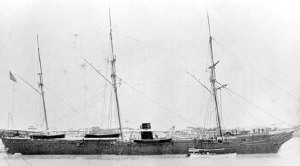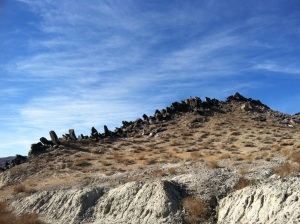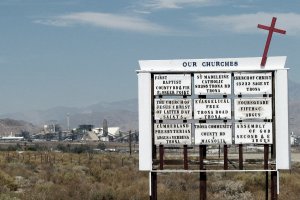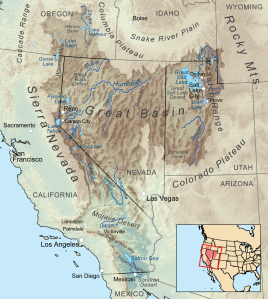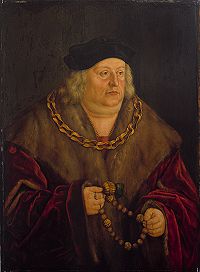Traditional historiography long followed the “Great Man Theory”- that historical events were propelled by the actions of Great Men who shook up the old order and remade the world in their image, until a new Great Man came along and did it all over again. Today, historians are more suspicious of this idea, but it isn’t difficult to call to mind some of history’s greatest movers and shakers even if one believes, as Gibbon said, that “history is indeed little more than the register of crimes, follies and misfortunes of mankind.” Alexander the Great, Qin Shi Huang, Genghis Khan and Napoleon all dramatically reshaped the world to their desires but there’s a different sort of “Great Man” who is almost equally interesting if perhaps less remembered. Instead of changing the world to match their own image, these men failed. And they died. And in dying, they changed the world more than they ever could have in life.
Archduke Franz Ferdinand of Austria-Hungary is the most obvious example of course, whose idealistic vision of a modernized empire was brought to an end 100 years ago today on June 28, 1914 on the streets of Sarajevo with a bullet that would pierce the brittle dikes that had held back the mounting tensions simmering throughout Europe’s long 19th century, a relative peace that had lasted 99 years that came to an end in an orgy of idiot nationalism and senseless bloodshed. But the roots of history are long, and a small part of World War I’s causes extend back 450 years to the death of another one of these ill-fated Anti-Great Men, a French Nobleman named Charles the Bold.
The story of Charles’s untimely death and its momentous consequences for European history begin with the ascendance of his family, the House of Valois-Burgundy and involve as much high drama, political maneuvering and bloody warfare as any story in history could be asked to have. In 1363, Philip the Bold, 21 years old and the fourth son of King John (Jean) II of France was granted the title of Duke of Burgundy by his father for bravery during the Battle of Poitiers. The Hundred Year’s War between England and France had temporarily ended three years earlier after more than twenty years of intermittent warfare. Edward III was both King of England and Duke of Aquitaine and while in the first capacity he was at the top of England’s feudal pyramid, in the second capacity he was vassal to the King of France, Philip VI which was a source of longstanding tension between the two monarchies. These tensions were exacerbated by Philip’s ascension to the throne. Philip was the first cousin of the previous French king, Charles IV who died without an heir. Charles IV’s nearest male relative was his nephew Edward III of England, the son of Charles’s sister Isabella, but the French nobility ruled that the inheritance of the throne could not pass through any female line, disbarring the English king from inheriting the French crown. Although nominally this decision was nothing more than a strict interpretation of Salic Law, it isn’t difficult to see the French nobility making their decision out of contempt for the prospect of being ruled by a foreigner, even if that foreigner was a French-speaking Duke of France descended from a line of French nobility who had quite cheerfully ruled England as foreigners for three hundred years.
Thus in 1328 the French monarchy instead passed to Philip, Count of Valois, whose quiet and unremarkable life up to this point would earn him the posthumous nickname Philip the Fortunate. Rules of inheritance in medieval Europe were informal which often led to bloody inheritance struggles like the civil war in England two centuries earlier that had brought Edward III’s dynasty, the Angevins, to power, whose fierceness had led later writers to give it the sensationalistic name “The Anarchy.” But what could have been another vicious struggle appeared to be a non-starter as Edward III declined to push his claim on the French throne. Europe momentarily breathed a sigh of relief.
The peace however did not last. Over the next twelve years tensions rose over diplomatic slights, France’s alliance with England’s longstanding rival Scotland and Edward’s indignation at paying feudal homage to Philip. In 1340, Edward declared himself the rightful king of France and one of the longest conflicts in history had begun.
We return to Philip, Duke of Burgundy twenty three years later in 1363. Twenty years of war had been an outrageous disaster for France which had been devastated by the Black Death and the destruction of the marauding English army led by Edward III’s son, the English folk hero Edward The Black Prince. France’s alliance with Scotland had proved useless as Scottish military power had been knocked out early in the war at the battle of Neville’s Cross and the English had won a major victory at Crécy. The war stretched into its second decade as war-weariness and the Black Death curtailed both kingdom’s military capability, but by the mid-1350s the war had resumed. In 1356 the Black Prince led the English to another major victory at Poitiers where John II, Philip VI’s son and now king of France, was captured by the English army. John II was eventually ransomed back to the French government but in his absence the crown’s authority collapsed under the weight of war debt, political infighting and the tremendous loss of life among France’s populous caused by both plague and war. Desperate to restore order, Charles IV, dauphin and regent during his father’s captivity agreed to the Treaty of Brétigny, ceding huge portions of northern and southwestern France to the English crown and paying a large ransom for King John II’s return. John returned to France in 1360 but as the indebted French crown had not yet paid his full ransom, several hostages remained in England in the king’s place, including his second son Louis. The king returned to his kingdom in shambles and in 1364 when his son Louis escaped captivity the king chivalrously returned to London, conveniently leaving the management of the state to his sickly son Charles V. King John II died shortly thereafter in London where he was given a sumptuous and well attended funeral.
It was under these difficult circumstances that Philip the Bold, so named for his teenaged valor on the field of Poitiers, was granted the Duchy of Burgundy. The Duchy has been vacant a ruler since the death of Philip of Rouvres in 1361. Both Philip of Rouvres and his wife Margaret, Countess of Flanders had each inherited huge parcels of feudal land in eastern France and the Low Countries respectively, largely by virtue of outliving their siblings in an era of unimaginable loss of life from both war and plague. But that good luck could only last with one of them. Wed as children, the two never reached adulthood before Philip of Rouvres was killed by plague; their marriage was never consummated. Without an heir, Philip of Rouvres’s substantial possessions passed to his stepfather, King John II of France who in 1363, before his flight from responsibility back to comfortable captivity in London, granted these possessions to his fourth son, Philip the Bold.
While King John II may have lacked certain qualities of kingliness that might have otherwise prevented his kingdom from collapsing he knew the value of having someone you trust administering your kingdom. In the pre-modern era, European kings lacked the infrastructure and authority to maintain large kingdoms with any degree of centralized state power. Instead, they relied on the feudal obligations of subordinate aristocrats such as Dukes, Counts, etc. to administer justice, raise armies and collect taxes. This was all well and good for kings as long as the systems of obligation and loyalty that kept feudalism running remained strong, but if the aristocracy no longer respected the king’s authority they tended to do things like strongarm the king into signing documents to curtail his power, fight bloody civil wars or chop off the king’s head and replace him. The French monarchy would spend most of its history intensively centralizing power under the monarch at the expense of the aristocracy; by the 18th century, France’s kings were the most powerful men in Europe, leading to nearly a century of warfare between France and most of its neighbors as they constantly attempted to stymie French power. At the time of the Hundred Year’s War, however, the French monarchy was still much more limited. The king ruled a great deal of territory directly but this centralization of power at the expense of the many small aristocratic territories also allowed what duchies and counties that remained to centralize and expand themselves. Thus, by the 14th and 15th centuries, the French aristocracy was composed of only a handful of very powerful families. The death of Philip of Rouvres gave King John II a tremendous opportunity: by giving this huge territory to his fourth son he could curtail the rise of an internal rival within the aristocracy by relying of family loyalty to keep the wealthy and populous territories of Burgundy on the side of the crown while still delegating management of the territory to a cadet branch. The plan couldn’t fail (it would fail).
The lands ruled by the Duke of Burgundy were unique: like many feudal holdings they were composed of several, non-contiguous parcels of land. But these lands did not only lie within France but also included the entirety of the Low Countries (the modern states of The Netherlands, Belgium and Luxembourg) which were not ruled by the French king but by the Holy Roman Emperor. The Holy Roman Empire, as Voltaire later quipped, was neither holy, nor Roman, nor an empire, but rather a collection of a huge number of German duchies, principalities, bishoprics and other states, all nominally ruled by an elected king called the Holy Roman Emperor (a title inherited from Charlemagne many centuries earlier). The actual power of the Emperor varied throughout time; during certain periods he had little measurable power and at other times in history he was the most powerful man in Europe. The kingdom of France and the HRE were the two most powerful feudal entities in Western Europe at this time, and by controlling huge, wealthy parcels of each the Duchy of Burgundy was poised to become extremely influential. In different times the Dukes of Burgundy would go on to hold tremendous sway over the French court, upset Europe’s balance of power, make war against the French monarchy and eventually create a Franco-Austrian rivalry that would dominate European politics for 500 years and set the stage for all the madness and atrocities of the 20th century. But we’ll save that for next time!








